India’s marketplace culture offers travelers extraordinary sensory experiences that engage all senses simultaneously. From ancient bazaars to specialized trading districts, these vibrant commercial centers combine centuries-old traditions with kaleidoscopic displays that overwhelm and delight visitors.
Here is a list of 20 remarkable Indian markets that deliver unforgettable sensory experiences for those willing to navigate their beautiful chaos.
Chandni Chowk, Delhi

Delhi’s oldest market dates back to the 17th century when Shah Jahan designed it with a canal reflecting moonlight. Today, its narrow lanes house Asia’s largest spice market (Khari Baoli), where mountains of vibrantly colored spices emit powerful aromas that tingle the nostrils.
Chaotic electrical wiring, constant vendor calls, honking rickshaws, and merchandise spilling onto pathways create an intense sensory symphony.
Johari Bazaar, Jaipur
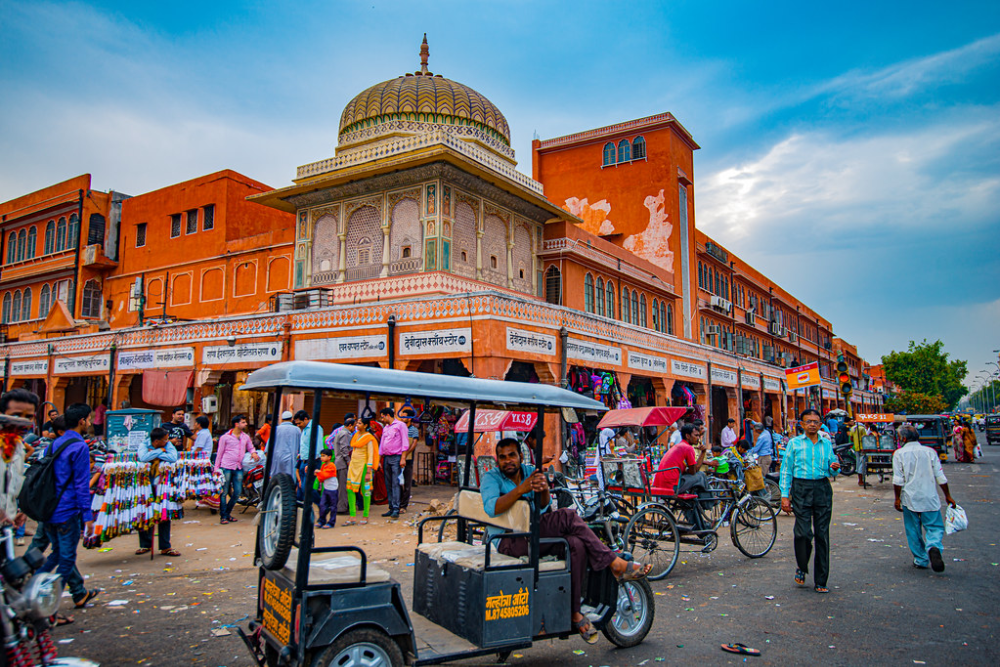
Jaipur’s jewelry market dazzles with traditional Rajasthani jewelry featuring intricate meenakari enamelwork in brilliant blues and greens. Beyond jewelry, the Pink City bazaars burst with textiles in impossible shades of fuchsia, saffron, and turquoise against salmon-colored buildings.
The constant tinkling of metalwork and negotiating voices creates an audio backdrop as rich as the visual display.
Like Travel Pug’s content? Follow us on MSN.
Mapusa Friday Market, Goa
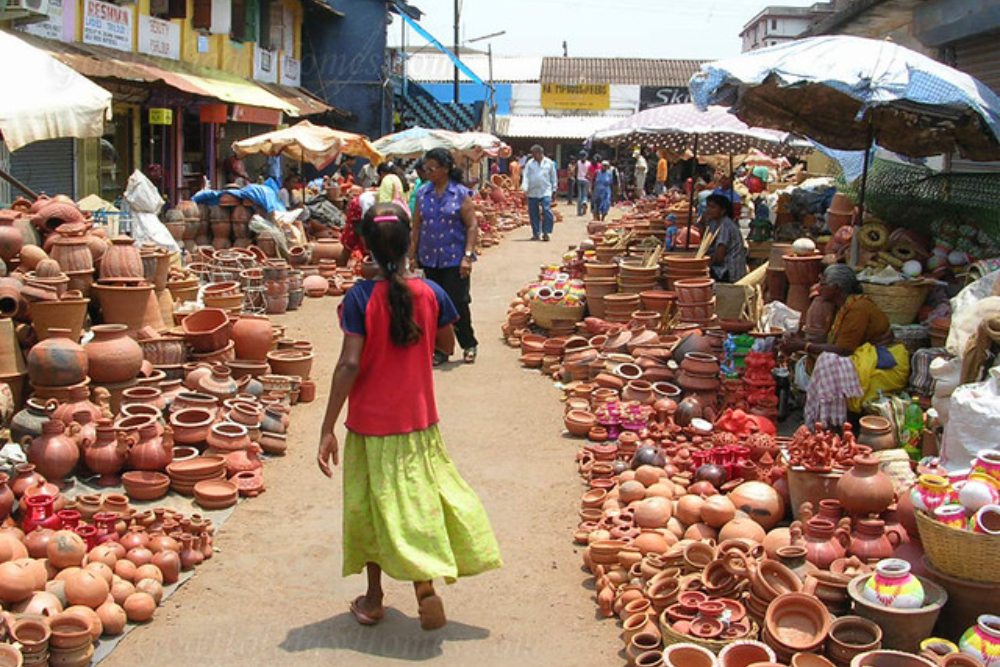
Unlike Goa’s tourist beaches, Mapusa’s authentic Friday Market serves locals with explosively colorful displays of regional produce and spices. Mountains of red chilies contrast against pyramids of yellow turmeric, while strings of marigolds and jasmine add floral perfume.
Portuguese influences appear in sausage vendors and bakeries selling distinctively Goan variations of European foods, while the pickle section offers pungent samples ranging from mild mango to eyewatering spicy preparations.
Devaraja Market, Mysore
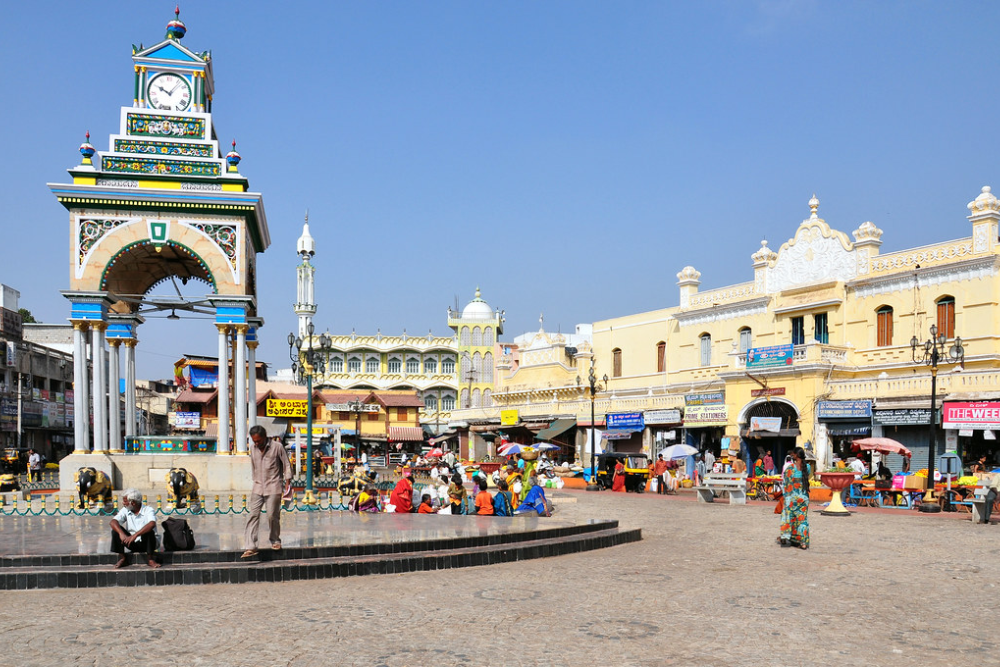
This 125-year-old market radiates color with its entrance arch leading to over 800 vendors. The flower section overwhelms with mountains of orange and yellow marigolds and fragrant jasmine strands prepared for temple offerings.
Produce sections display geometrically perfect fruit stacks, while the market’s most distinctive feature comes from pyramids of kumkum powder used for bindis, available in dozens of shades from vermilion to deep crimson.
Ima Keithel (Mother’s Market), Imphal
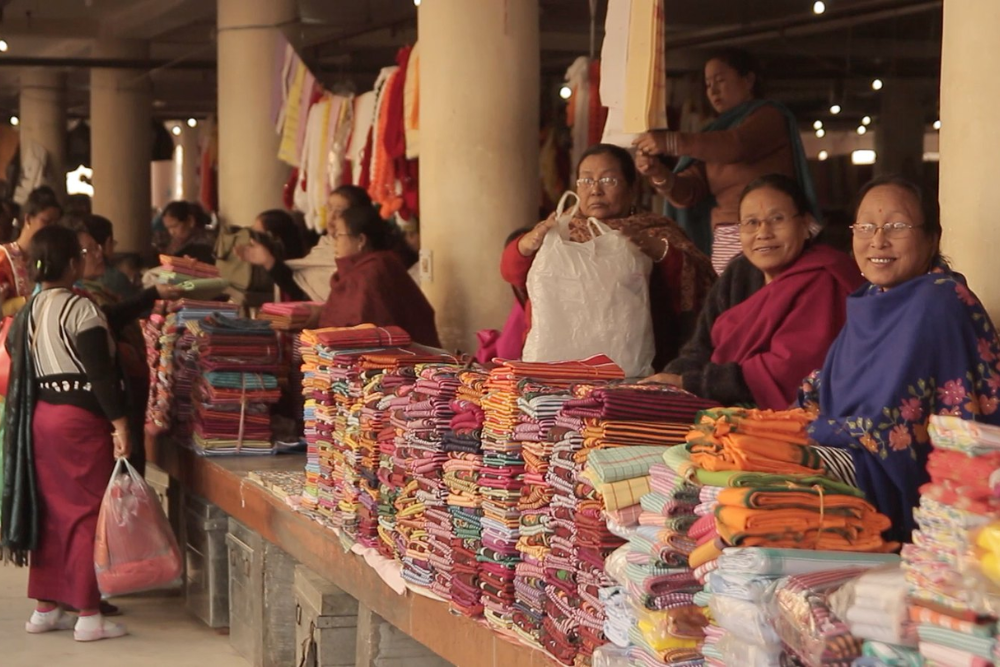
This unique Manipuri market stands out as one of Asia’s few markets run entirely by women, with over 4,000 female vendors operating stalls in a tradition dating back 500 years. The tribal textile section showcases northeastern weaving traditions with geometric patterns rarely seen elsewhere in India.
Unusual regional produce creates distinctive visual displays, including medicinal herbs and the famously hot ghost pepper.
Like Travel Pug’s content? Follow us on MSN.
Colaba Causeway, Mumbai
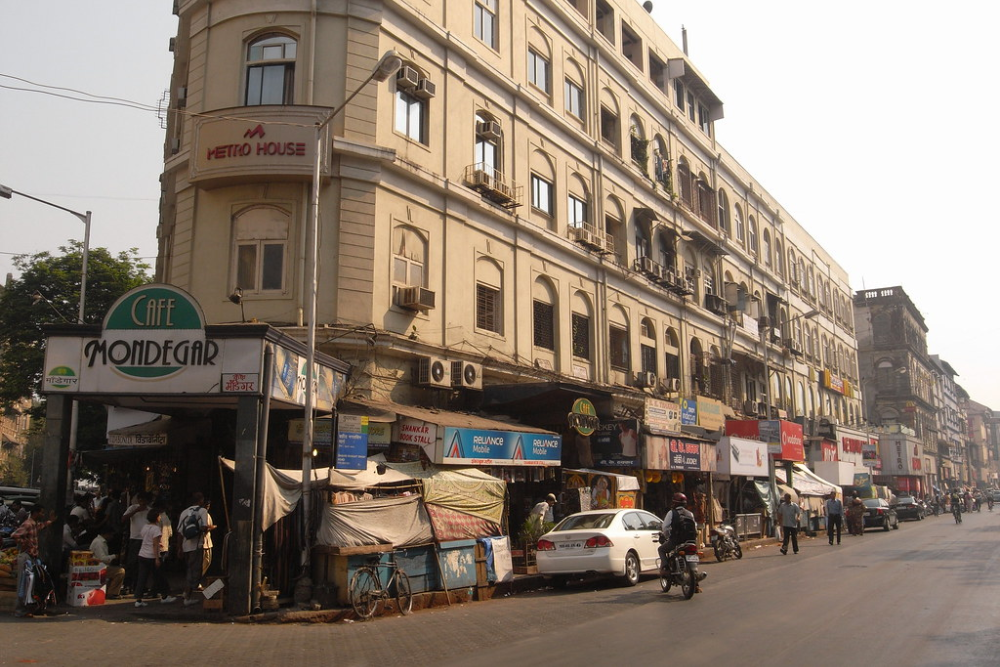
This upscale market street near Mumbai’s Gateway of India combines colonial architecture with contemporary commerce. Street vendors arrange merchandise along sidewalks in front of established shops, creating dual layers of activity beneath Gothic-influenced buildings.
The sensory experience comes from contrasts – air-conditioned boutiques next to sunbaked street displays, luxury brands beside handmade crafts, and food stalls adding aromas from fresh fruits to spicy chaat.
Flower Market (Malik Ghat), Kolkata
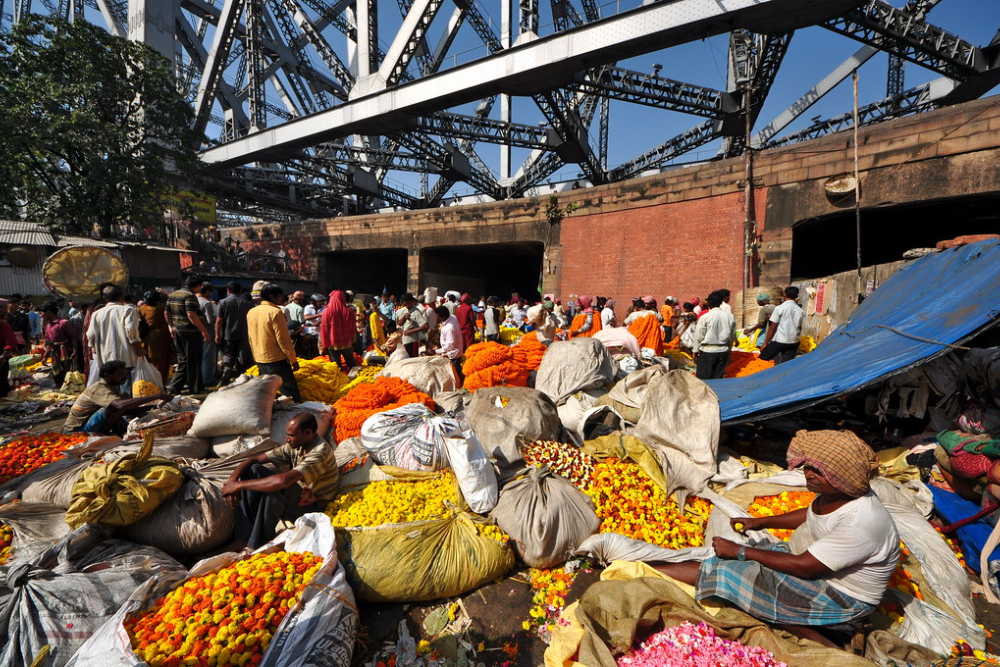
Operating beneath Howrah Bridge, this wholesale flower market creates one of India’s most photographed spectacles as porters navigate narrow pathways carrying massive arrangements on their heads. The visual impact peaks at sunrise when golden light cuts through hanging marigold garlands.
The sensory experience combines intense floral fragrance with the nearby Hooghly River’s distinct aroma and the cacophony of simultaneous negotiations in Bengali and Hindi.
Arpora Saturday Night Market, Goa
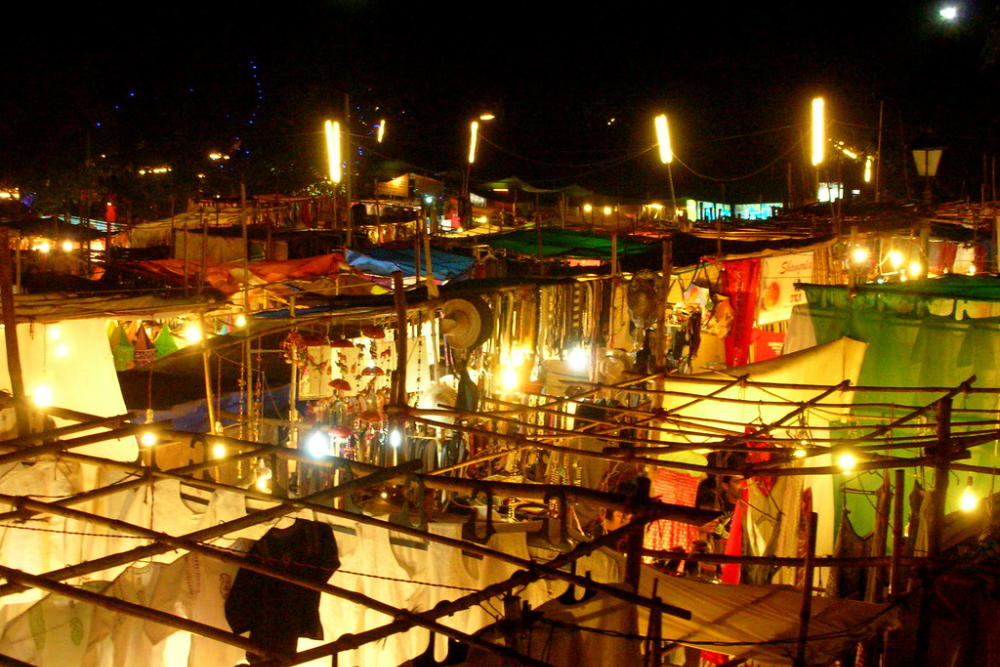
Unlike traditional Indian markets, this contemporary creation caters to tourists with an international atmosphere combining Indian elements with European night market traditions. After sunset, thousands of strung lights and colorful lanterns transform the space into a psychedelic wonderland reflecting Goa’s reputation for trance parties.
At the same time, food stalls from dozens of world cuisines add global flavors rarely found in traditional Indian markets.
Like Travel Pug’s content? Follow us on MSN.
Sardar Market and Clock Tower, Jodhpur

Located beneath Jodhpur’s landmark clock tower, this market introduces visitors to the ‘Blue City’ trading traditions. The market’s sensory signature revolves around indigo – from blue-washed buildings to distinctive blue textiles.
Spice vendors create mountains of yellow turmeric, red chilies, and brown cumin that visitors navigate through wafting clouds of incense. At the same time, traditional musical performances often spontaneously occur beneath the clock tower.
Meena Bazaar, Delhi
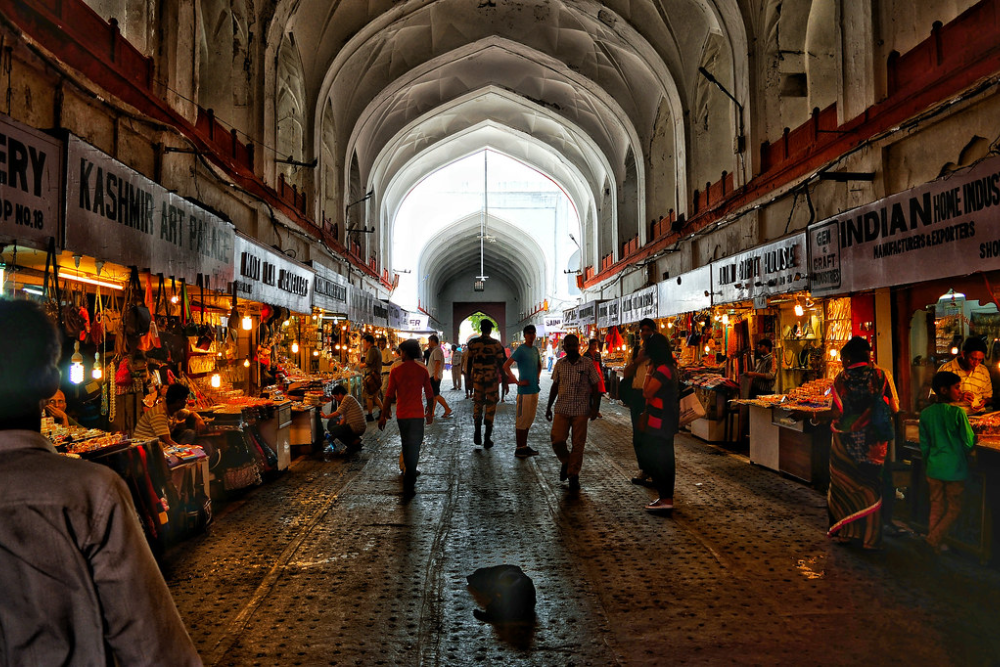
Tucked behind Jama Masjid in Old Delhi, this historic Mughal-era market specializes in wedding attire that creates spectacular color displays. Shops hang fully embroidered wedding lehengas and sherwanis outside narrow storefronts, creating tunnels of sparkling fabrics.
The sensory experience peaks in the zardozi embroidery section, where artisans work with gold thread and sequins, while nearby kebab vendors and biryani shops add layered aromas.
Manek Chowk, Ahmedabad
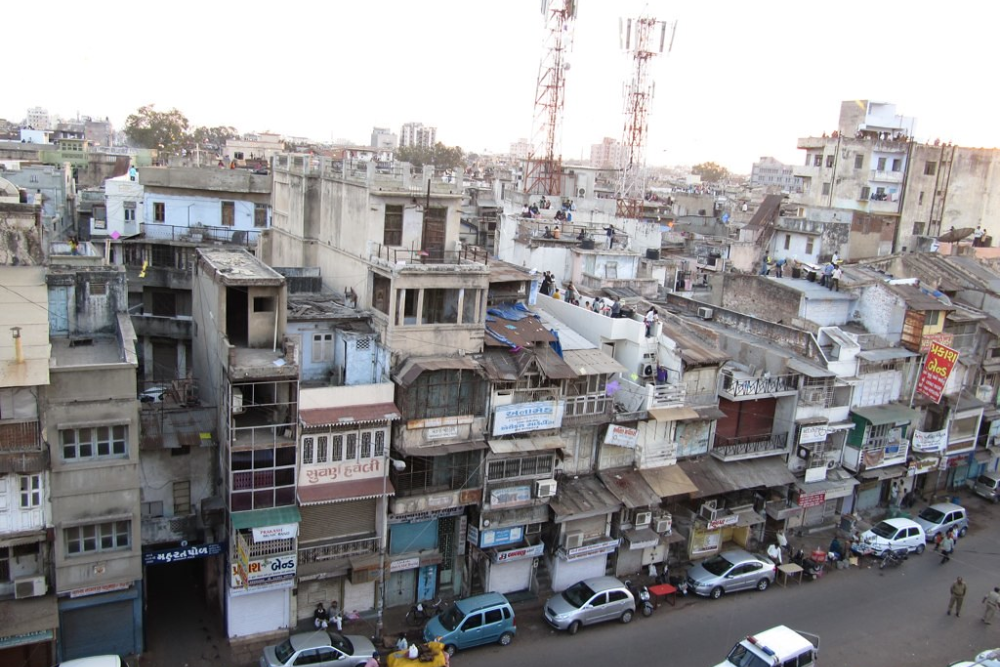
This remarkable space transforms through three incarnations daily – vegetable market in the morning, bullion trading center midday, and street food paradise at night. The morning produce market creates extraordinary color contrasts against cream-colored Gujarati architecture.
The most intense sensory experience occurs after sunset when over a hundred food stalls create a ‘hunger junction,’ with strong aromas of Gujarati snacks like dabeli and pav bhaji mixing with sizzling sounds from dozens of cooking stations.
Like Travel Pug’s content? Follow us on MSN.
Dilli Haat, Delhi
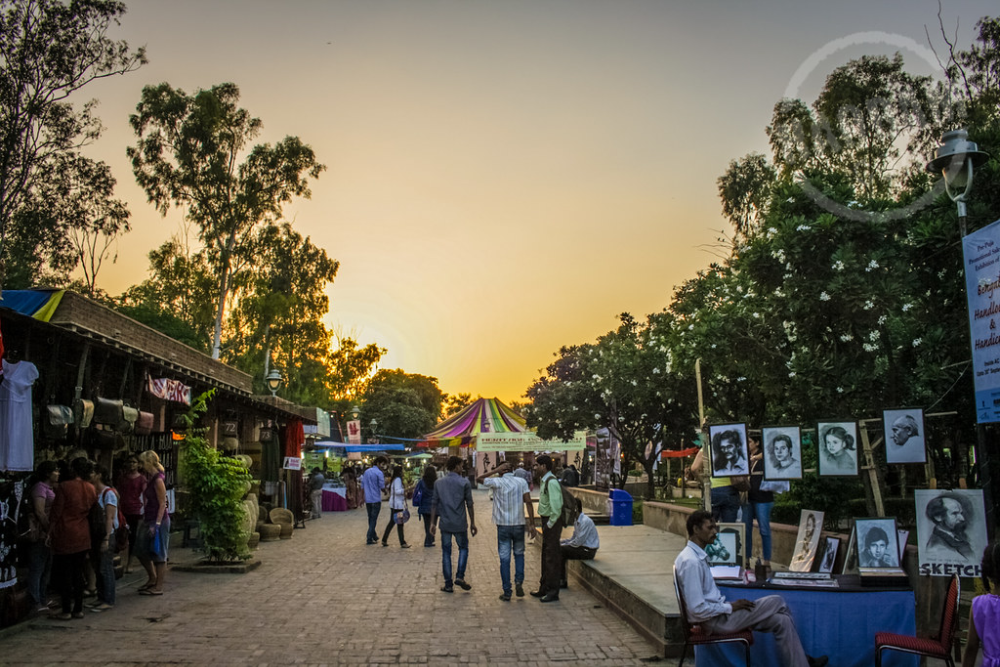
This planned cultural marketplace was designed to showcase traditional crafts and cuisines from across India’s diverse states. The market rotates artisans from different regions throughout the year, creating an ever-changing sensory landscape as craftspeople from Kashmir to Tamil Nadu display their distinctive color palettes simultaneously.
Food stalls arranged by geographic region allow visitors to experience culinary traditions from across the subcontinent in a single location.
Floating Vegetable Market, Dal Lake, Srinagar

Kashmir’s distinctive agricultural tradition produces this unique market where farmers sell produce directly from wooden boats on Dal Lake, creating reflections that double the visual impact. Before sunrise, dozens of wooden shikaras converge, laden with carefully arranged produce grown in the lake’s floating gardens.
Transactions occur in relative quiet, with soft rippling water sounds replacing typical market cacophony, while misty Himalayan peaks provide a dramatic backdrop.
Laad Bazaar, Hyderabad
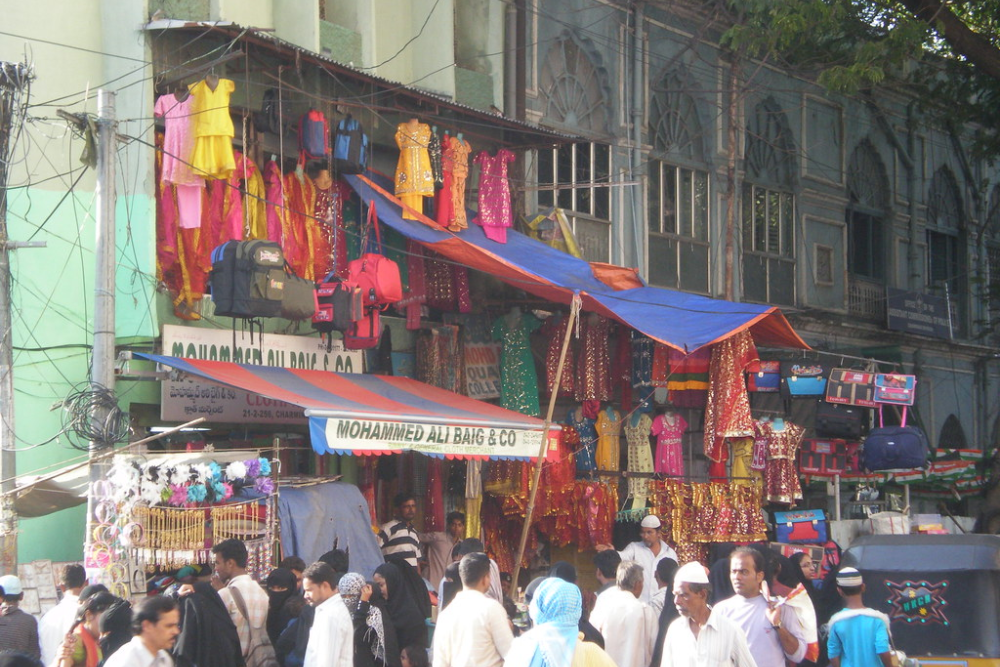
Running from the iconic Charminar through narrow lanes, this 400-year-old market specializes in bangles, creating one of India’s most distinctive shopping experiences. Shops display thousands of glass, lac, and metal bangles arranged by color, creating rainbow-like patterns.
During wedding season, illuminated storefronts cause light to reflect off countless bangles, while the distinctive sound of glass bracelets sliding onto wrists adds an audio dimension complemented by vendors selling natural perfumes.
Like Travel Pug’s content? Follow us on MSN.
Tibetan Market, McLeod Ganj
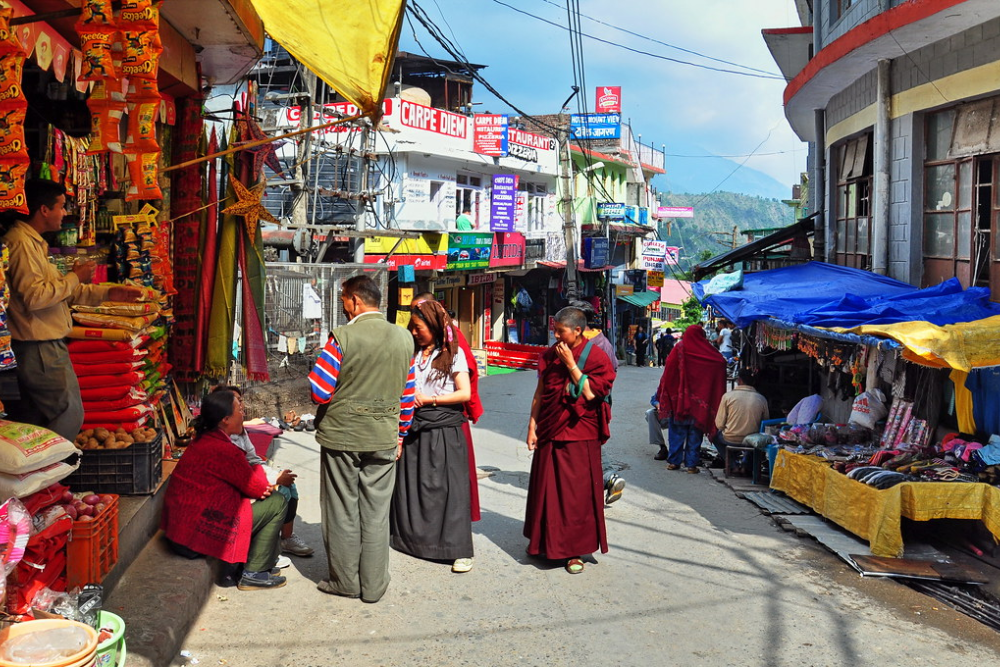
This Himalayan market in Dharamshala offers sensory experiences utterly distinct from lowland Indian bazaars. The market’s color palette revolves around Tibetan Buddhist traditions, with prayer flags in five colors strung above stalls selling turquoise jewelry, orange monk robes, and deep red carpets.
Cold mountain air carries the aroma of Tibetan butter tea and steamed momos. In contrast, the sound of the Tibetan language, spinning prayer wheels, and occasional monastery chanting create an atmosphere more Himalayan than Indian.
Crawford Market, Mumbai
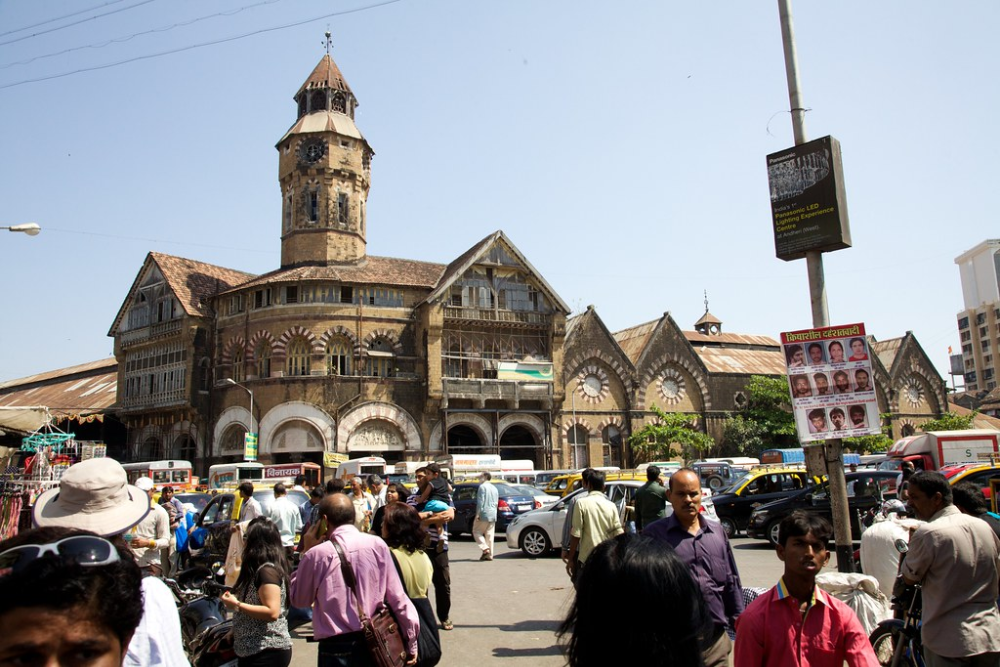
Housed in a historic British colonial building with Norman and Flemish influences, this market combines Victorian structure with thoroughly Indian commercial energy. Fruit vendors arrange produce in precise geometric patterns beneath a frieze designed by Rudyard Kipling’s father.
The spice section displays hundreds of varieties in open sacks, creating powerful aromatic clouds that change as shoppers move through different aisles, creating a uniquely Mumbai sensory experience.
Kinari Bazaar, Delhi
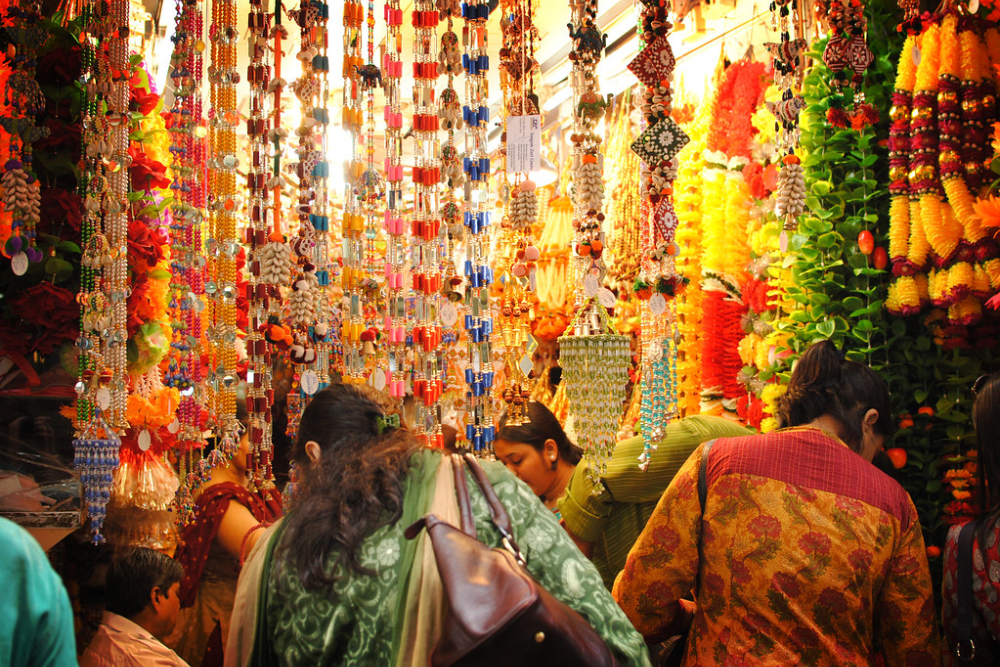
This specialized market focusing on wedding trimmings creates one of Delhi’s most concentrated color experiences. Shops display thousands of decorative elements, including sequined ribbons, beaded tassels, and metallic borders arranged by color, creating storefront rainbows visible down entire lanes.
The market reaches sensory overload during the wedding season when shoppers crowd narrow passages beneath canopies of hanging fabrics and trims that create tinkling sounds with every breeze.
Like Travel Pug’s content? Follow us on MSN.
New Market, Kolkata
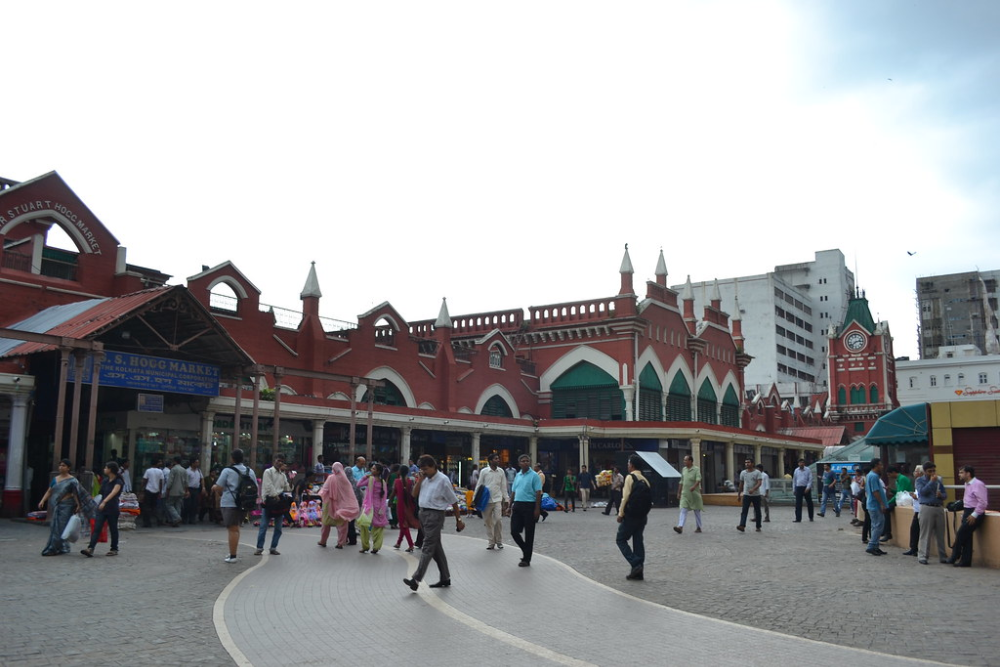
This historic covered market houses over 2,000 stalls within a distinctive red-brick Victorian structure topped with a clock tower. Specialized sections create sequential sensory experiences – from cheese shop aromas to rainbow displays in the toy market and gleaming presentations of traditional Bengali sweets arranged by color.
The flower section creates a dramatic visual impact, with garland makers continuously stringing jasmine, marigolds, and roses into ceremonial decorations.
Mangalwar Bazaar, Imphal
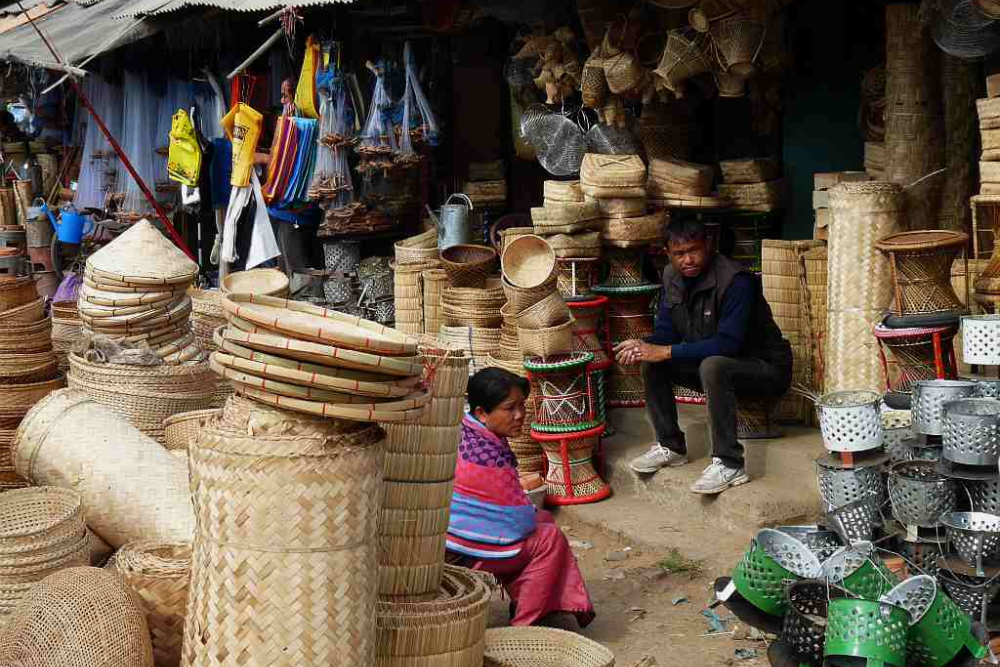
This weekly tribal market in Manipur showcases northeastern Indian cultural diversity, with indigenous communities trading distinctive handicrafts and agricultural products. The market’s color palette differs dramatically from mainstream Indian markets, featuring natural dyes in tribal textiles arranged by ethnic group.
The sensory experience includes unfamiliar languages, tribal jewelry sounds, and aromas of fermented bamboo shoots and other northeastern specialties rarely found elsewhere in India.
Goa Spice Plantations, Various Locations
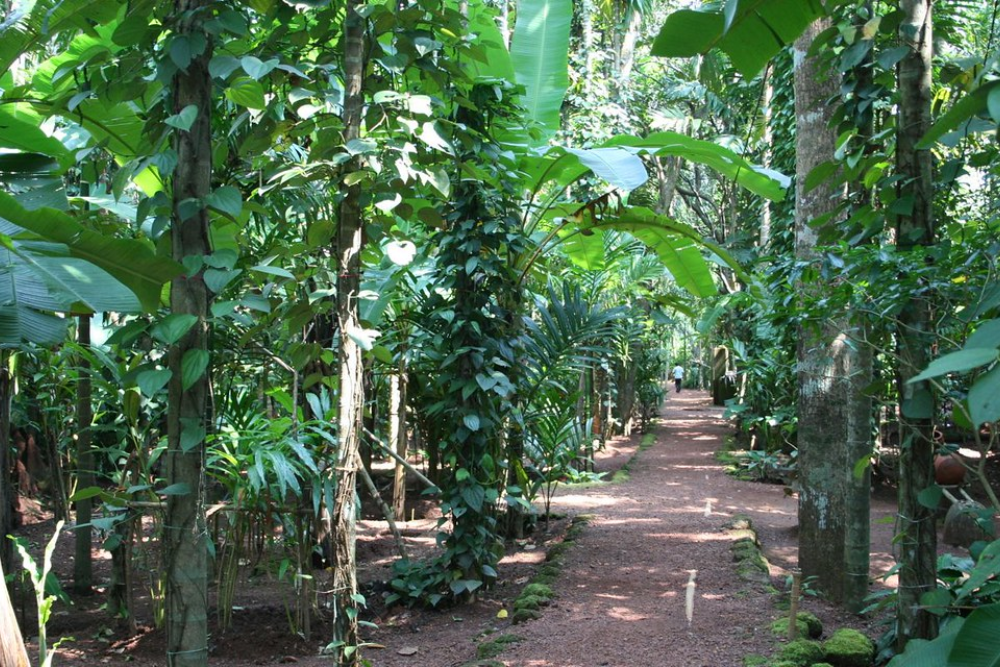
While not traditional markets, these commercial spice gardens function as interactive marketplace experiences where visitors walk through growing spices before reaching sales areas. These plantations create multi-layered journeys where visitors see, smell, touch, and taste spices in their natural environments before encountering them as products.
Guides crush fresh leaves and pods to release aromas before visitors explore color-coded growing sections and shops selling culinary and Ayurvedic preparations.
Like Travel Pug’s content? Follow us on MSN.
The Sensory Symphony
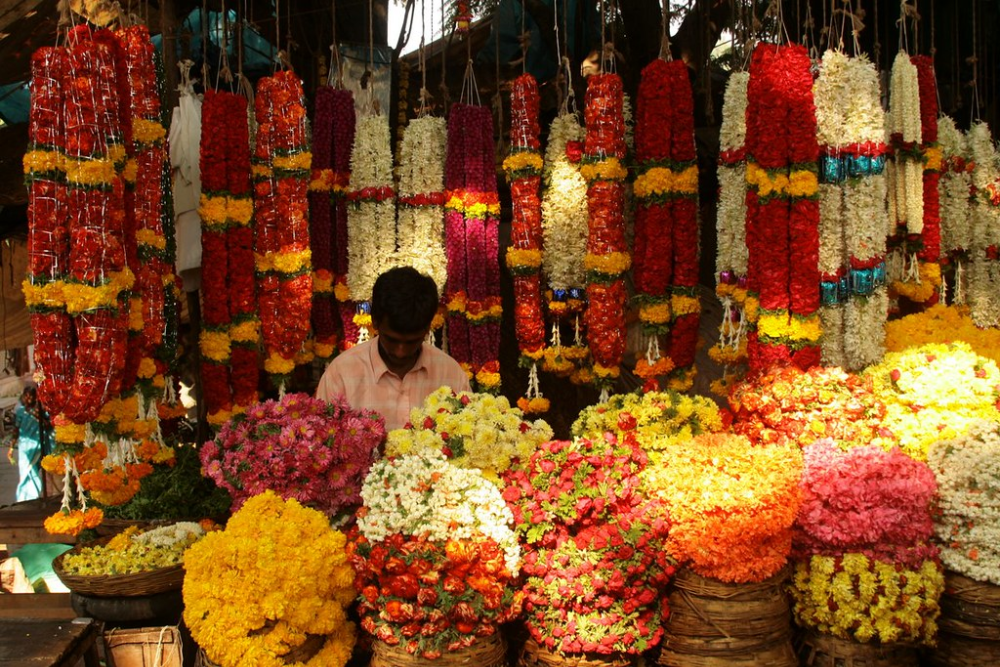
India’s markets deliver more than mere shopping—they provide immersive cultural experiences that engage every sense simultaneously. These spaces transcend their utilitarian functions to become living museums of regional traditions, architectural heritage, and culinary arts.
For travelers seeking authentic connections with Indian culture, these vibrant marketplaces offer unfiltered glimpses into daily life through sensory languages that require no translation.
More from Travel Pug

- 20 Destinations That Were Once Thriving but Are Now Quietly Disappearing
- 13 Destinations Where Tourists Regularly Regret Their Trip
- 20 Once-Popular Beach Towns That Are Now Ghostly Empty
- 10 Under-the-Radar Mountain Towns That Are Both Affordable and Beautiful
- Take a ‘Learning Vacation’ in These 20 Extraordinary Places
Like Travel Pug’s content? Follow us on MSN.
